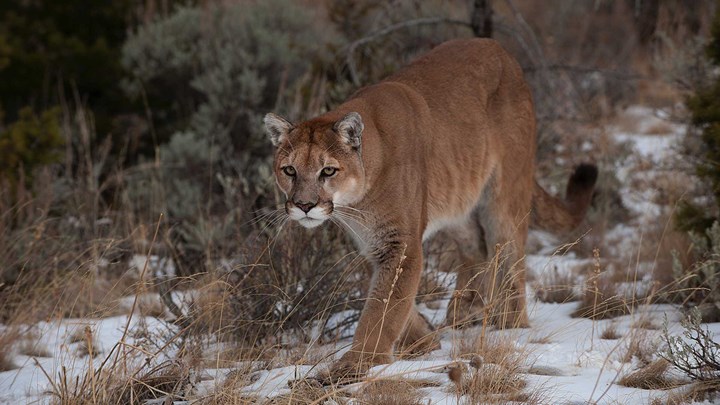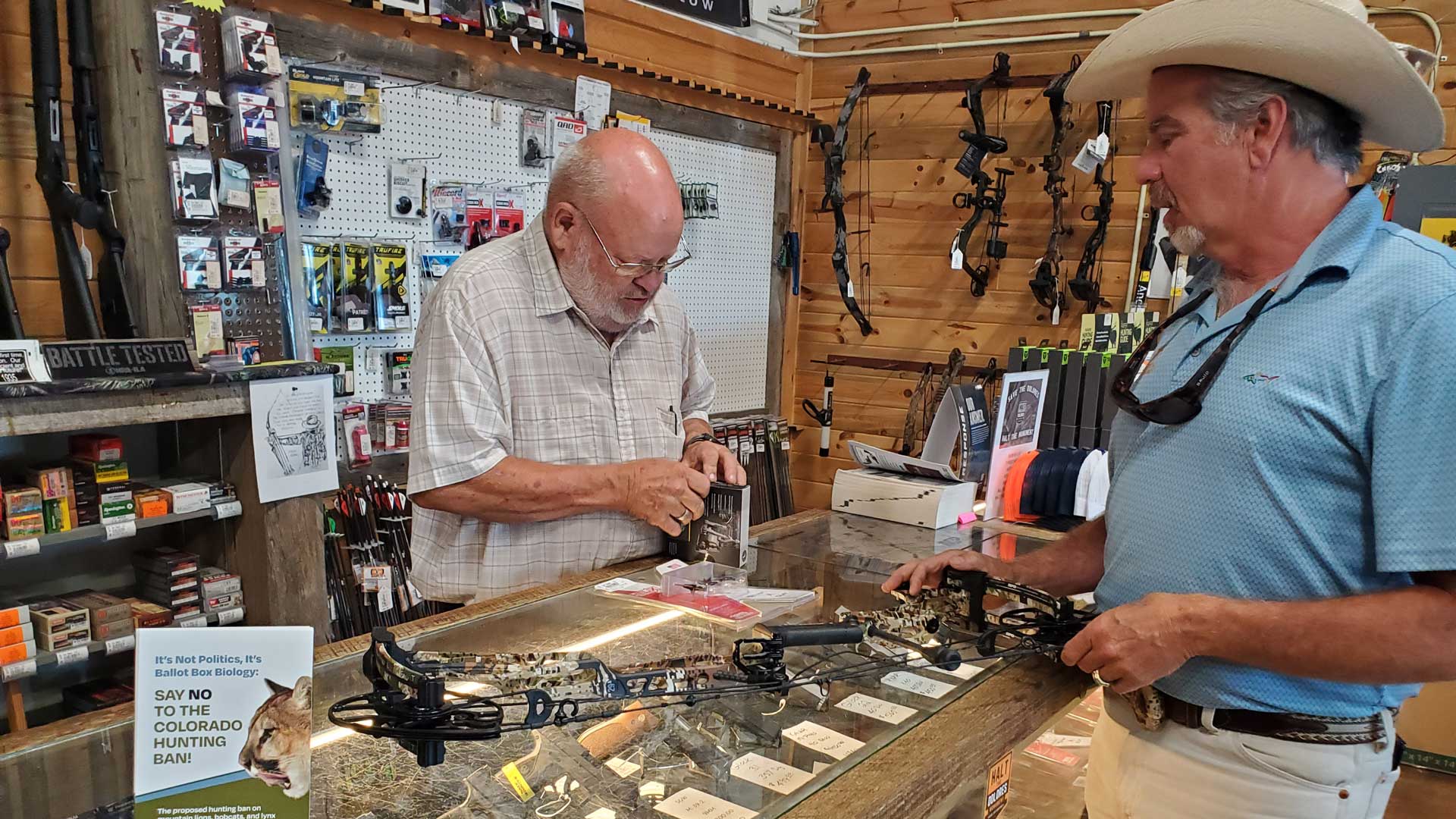
by Karen Mehall Phillips - Wednesday, July 17, 2024

September 22, 2013, was a hunter’s dream come true. Not only were my husband and I celebrating our three-month wedding anniversary during the Colorado archery elk season, but we stood side by side in the aspens and arrowed two 6-point bulls only minutes apart. Convinced that our remarkable good fortune was because 22 was my lucky number, I was certain the date would always bring good luck.
But Sept. 22, 2023, was a hunter’s nightmare. The joys of Colorado’s archery elk season were overshadowed by animal rights extremists representing the group Cats Aren’t Trophies (CAT) who filed a proposed ballot initiative to ban all hunting and trapping of mountain lions, bobcats and the already federally protected Canada lynx. As the NRA Institute for Legislative Action (NRA-ILA) explained at the time, if the measure, known as Initiative 91, made it onto the November 2024 ballot and passed, it would “prevent hunters and state wildlife management officers from managing the state’s growing predator populations through hunting.”
Hunters and others who cared about wildlife immediately wondered what would happen to prey species like deer and elk—species already at risk in some areas of the state following the passage of Colorado’s disastrous 2020 ballot initiative, Proposition 114, mandating the introduction of gray wolves. Though “Prop 114” passed by less than 1 percent, the damage to farmers, ranchers, hunters, livestock and wildlife was done. It was the first time in history that a state’s authority to decide whether to introduce a species was taken from the state wildlife agency, Colorado Parks & Wildlife, and given to voters who know nothing about science-based wildlife management.
On the heels of Prop 114, Initiative 91 also sparked renewed concerns from farmers and ranchers over the safety of their livestock. Others worried about an increase in human-predator encounters, and every so often someone even voiced concern for the cats, knowing that many predators ultimately starve in an unbalanced ecosystem. Extremists leave this last part out because they value their ideology over animal welfare.
But there was hope: The state-based anti-hunting group CAT, despite backing from the Humane Society of the United States and Friends of Animals, still had to find a minimum of 124,328 Colorado citizens (5 percent of the 2.4 million who voted in 2020) to sign its petition. Following the fallout over Prop 114—which passed by only 50.3 percent, thanks to residents in the nine urban counties surrounding Boulder and Denver who will never see a wolf—maybe just enough Coloradoans had processed the truth about legal, regulated hunting and its role in ensuring the sustainable management of our renewable wildlife resources. State-based hunter-backed groups such as the Colorado Wildlife Conservation Project (CWCP)—the state’s largest alliance of hunting and conservation organizations at 20-plus groups—and Coloradoans for Responsible Wildlife Management were certainly doing their part to make sure hunters and others concerned for wildlife understood the dangers of ballot-box biology and why residents must say no to a cat hunting ban.

No such luck. On July 3, CAT announced it had turned in more than 188,000 voter signatures to Colorado’s secretary of state, who has 30 days to check their validity and determine whether Initiative 91 is added to the ballot. In the meantime, the NRA and other hunter-backed groups continue to stand with hunters and Colorado’s wildlife managers as the likelihood of having to fight another unwise Colorado ballot initiative appears imminent.
“Radical anti-hunting activists are attempting to impose a ban on big cat hunting through propaganda and misinformation versus reasoned science,” said Travis Couture-Lovelady, Colorado NRA-ILA State Director. “Wildlife management decisions should be studied and made by experts using scientific data—not based on emotion.”
Couture-Lovelady is spot-on for those who focus on the facts. As this NRA website tracks, this is why the NRA, hunters and groups from the Congressional Sportsmen’s Foundation to the Rocky Mountain Elk Foundation are united against Initiative 91.
But facts do not run rampant. While the CAT website claims that a Colorado cat hunting ban “will put public safety and pets, wildlife and the economy first,” common sense shows the opposite would occur. Concerns over safety, pets and wildlife would increase and the economy—and CPW—would go without hunters’ dollars. The CAT website also claims that a cat hunting ban is “good for wildlife because indiscriminate killing of predators who are not causing any problems is unwarranted and destabilizes the peaceful co-existence between humans, domestic animals and predators.” But legal, regulated hunting, by definition, is not indiscriminate killing, and the only place predators co-exist with other animals is in Walt Disney movies. Such claims are tactical moves by extremists that aim to take advantage of voters who know nothing about hunting and wildlife management in efforts to trigger human emotions so the public votes to force CPW to shut down hunting.

The truth is CPW embraces legal, regulated hunting of all game species because it sustains their populations. According to the CPW website, Colorado’s mountain lion population (not including kittens) is between 3,800 to 4,400, and its website shares that the number has grown steadily since the species was classified as a big-game animal in 1965. While mountain lions are creating pressure on deer populations, it says bobcat populations also may be increasing in some areas. This is part of the reason why extremist-backed Colorado General Assembly bills to restrict cat hunting in 2022 and 2023 never gained traction. So, extremists used the next best option—a ballot initiative—to go around the legislative and regulatory processes the state relies on to manage its wildlife and keep its ecosystem in balance.
Yet while CPR voiced strong opposition to ballot-box biology via Prop 114 in 2020, it has so far remained neutral on Initiative 91, though its passage would permit anti-hunters to snatch away its wildlife management authority once again.
Nearly lost in the shuffle is the fact that Initiative 91 also ignores that CPW is legislatively mandated to provide opportunities for hunting—as are state wildlife agencies in the other 49 states—and that it conflicts with the North American Model of Wildlife Conservation (NAMWC) established by hunters more than a century ago.
As outlined by the U.S. Fish & Wildlife Service, the NAMWC establishes that “wildlife is a public trust, an American birthright and that wildlife species need to be managed in a way that their populations will be sustained forever.” NRA-ILA regularly underscores that the NAMWC requires the presence of hunters on the landscape and ensures that hunting is heavily regulated and controlled by biologists and state wildlife agencies—professionals who ensure it remains the most successful wildlife conservation model in the world.
Regardless whether hunters live in Colorado, they must help to educate the public on why hunting bans are a bad idea. A half a world away, Namibia took this stand in 2016 when its Ministry of Environment and Tourism announced it was putting a ban on all hunting bans as the pro-hunting nation recognized how hunters and hunting gave wildlife value and embraced hunters’ badly needed conservation dollars.
But don’t assume voting “no” on an anti-hunting Colorado ballot initiative is common sense when extremists actively distort the truth about legal, regulated hunting to make the debate about human emotion over the facts. While NRA HLF research conducted by Responsive Management shows hunting is consistent with the value and beliefs of most Americans who support hunting as a necessary form of wildlife management, the facts cannot speak for themselves—even though hunting is the foundation of our nation’s conservation success story.
Please check back with this NRA website as we await the fate of Initiative 91. If it is added to the state ballot, one wonders if it will go the way of the wolves and pass—despite that the NAMWC recognizes that wildlife thrives due to support structures put in place by hunters—or if those who support common-sense wildlife management for predator and prey species alike can mobilize those who care about wildlife to vote no.
E-mail your comments/questions about this site to:
[email protected]
